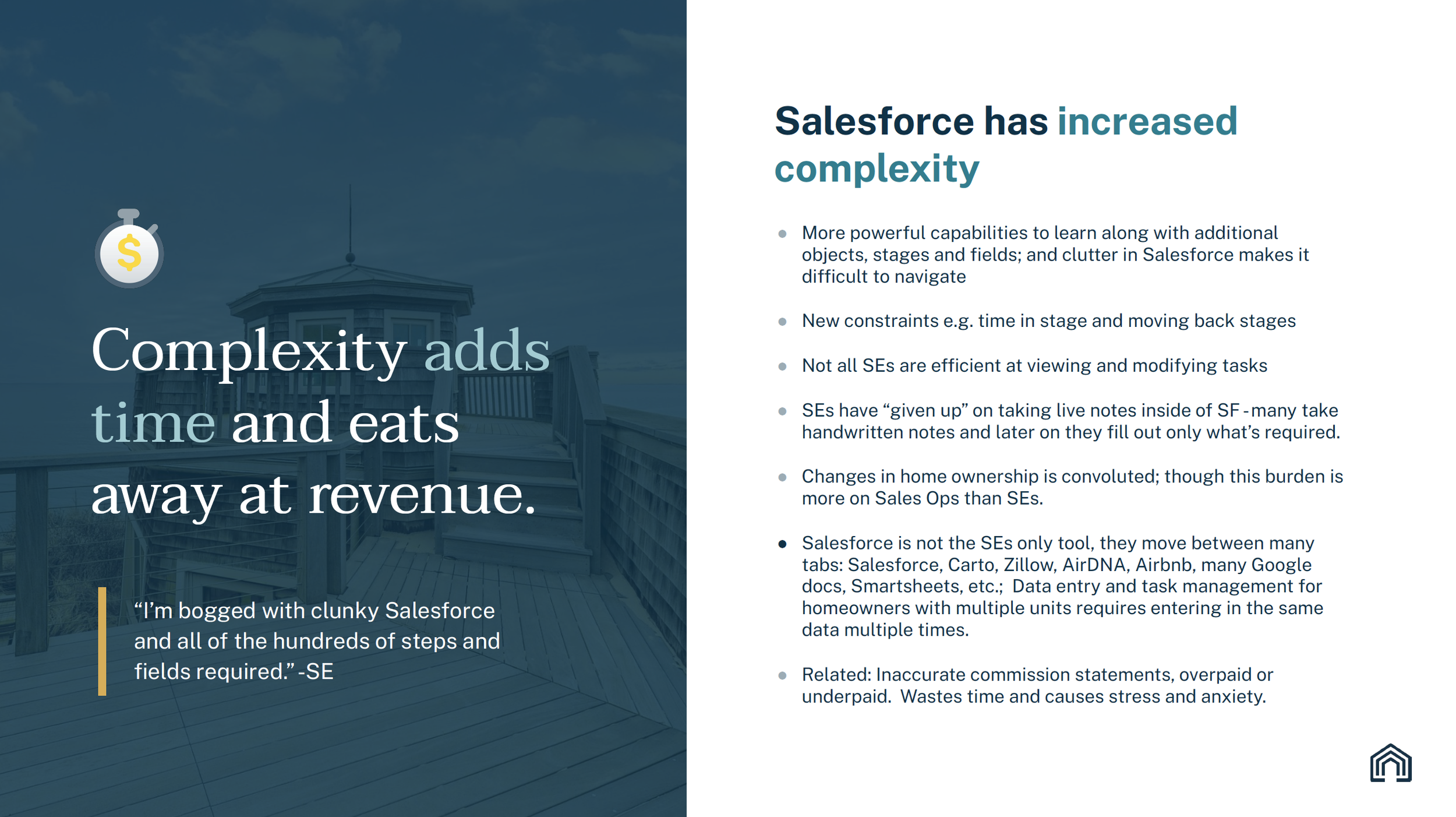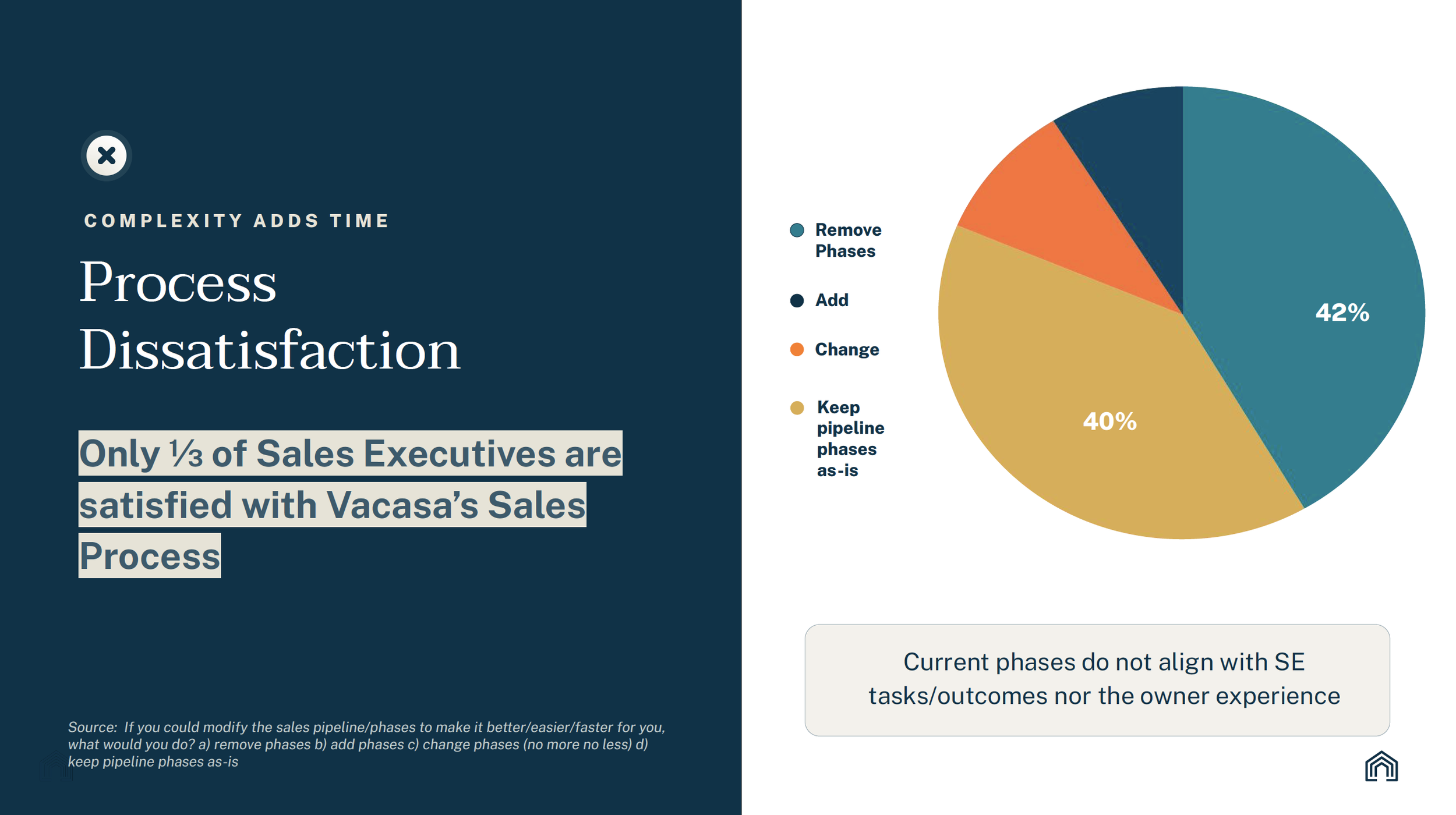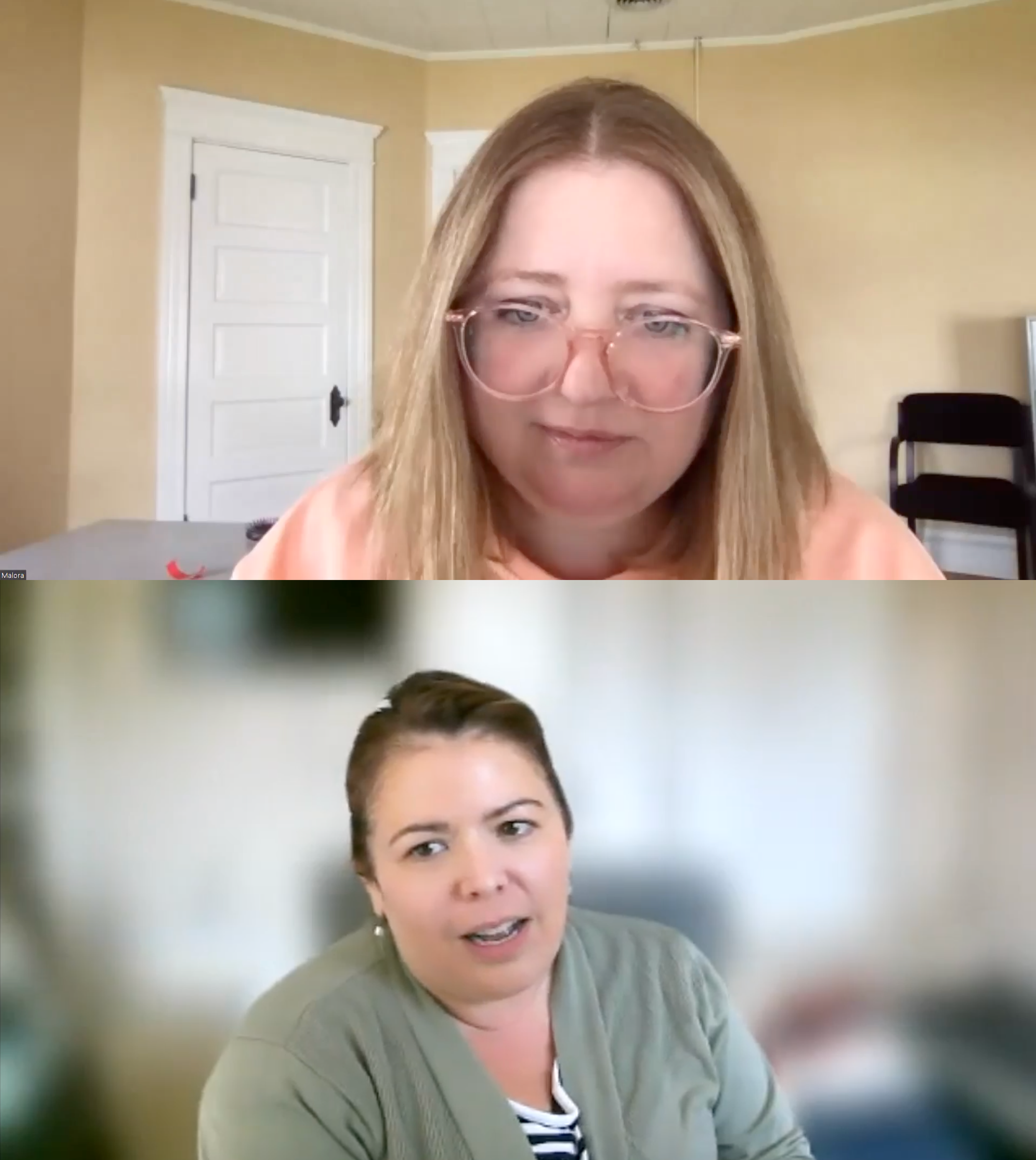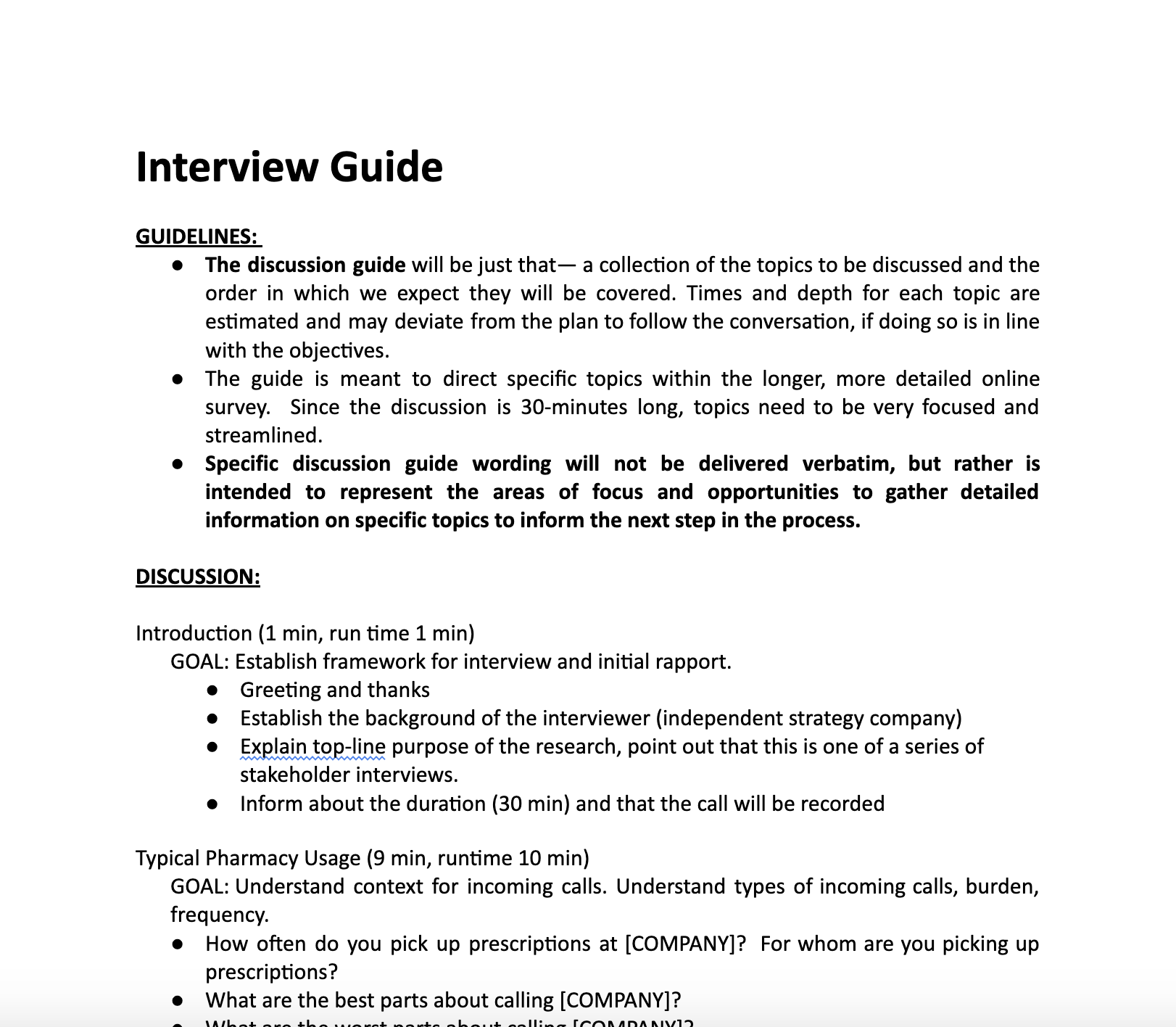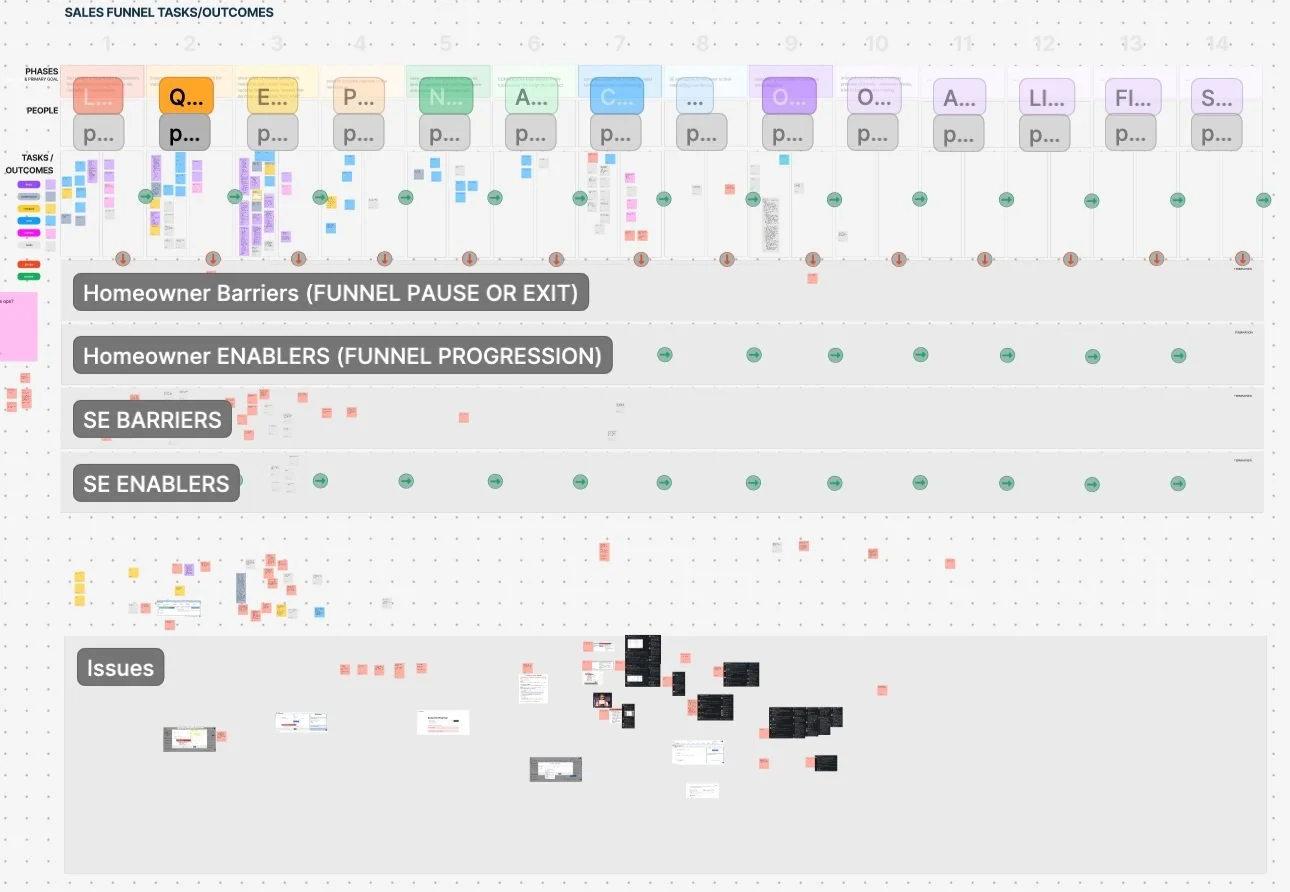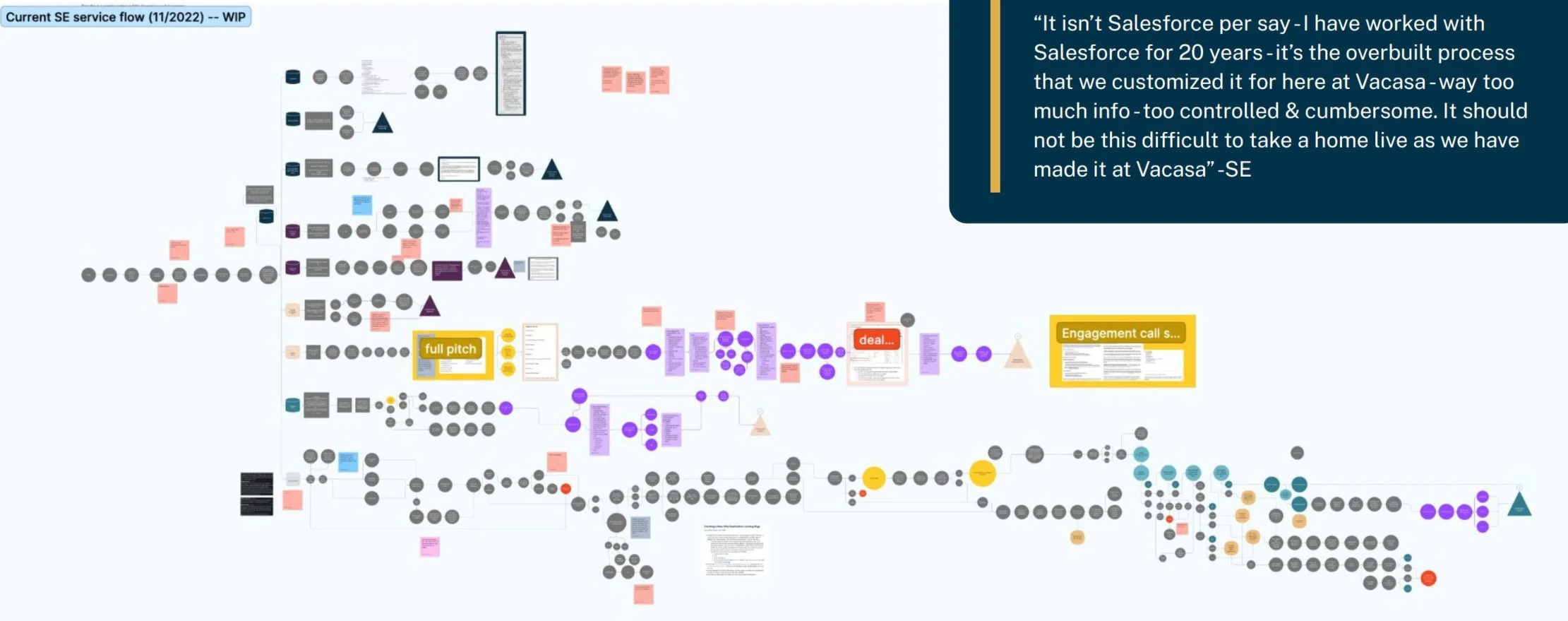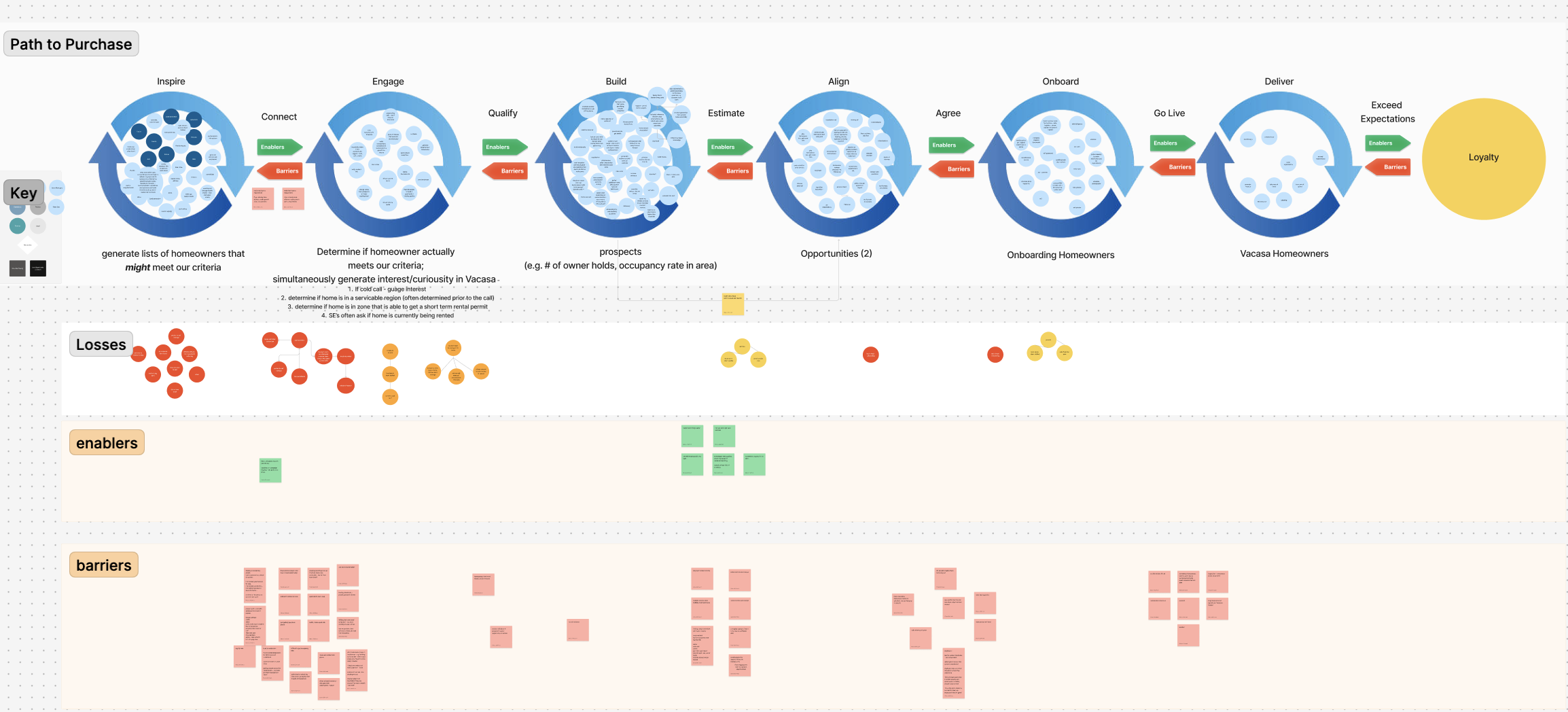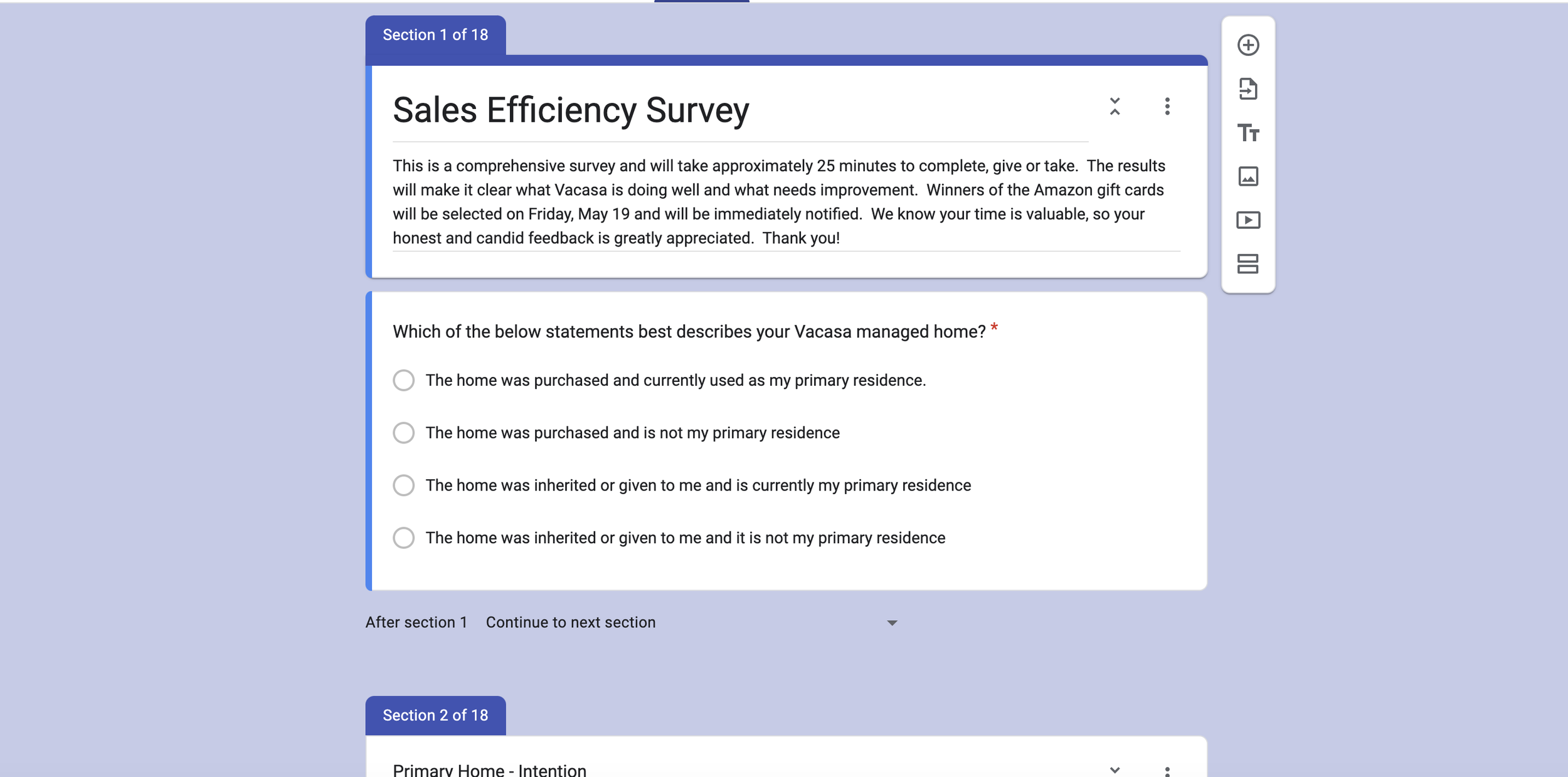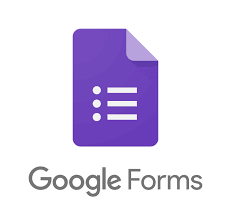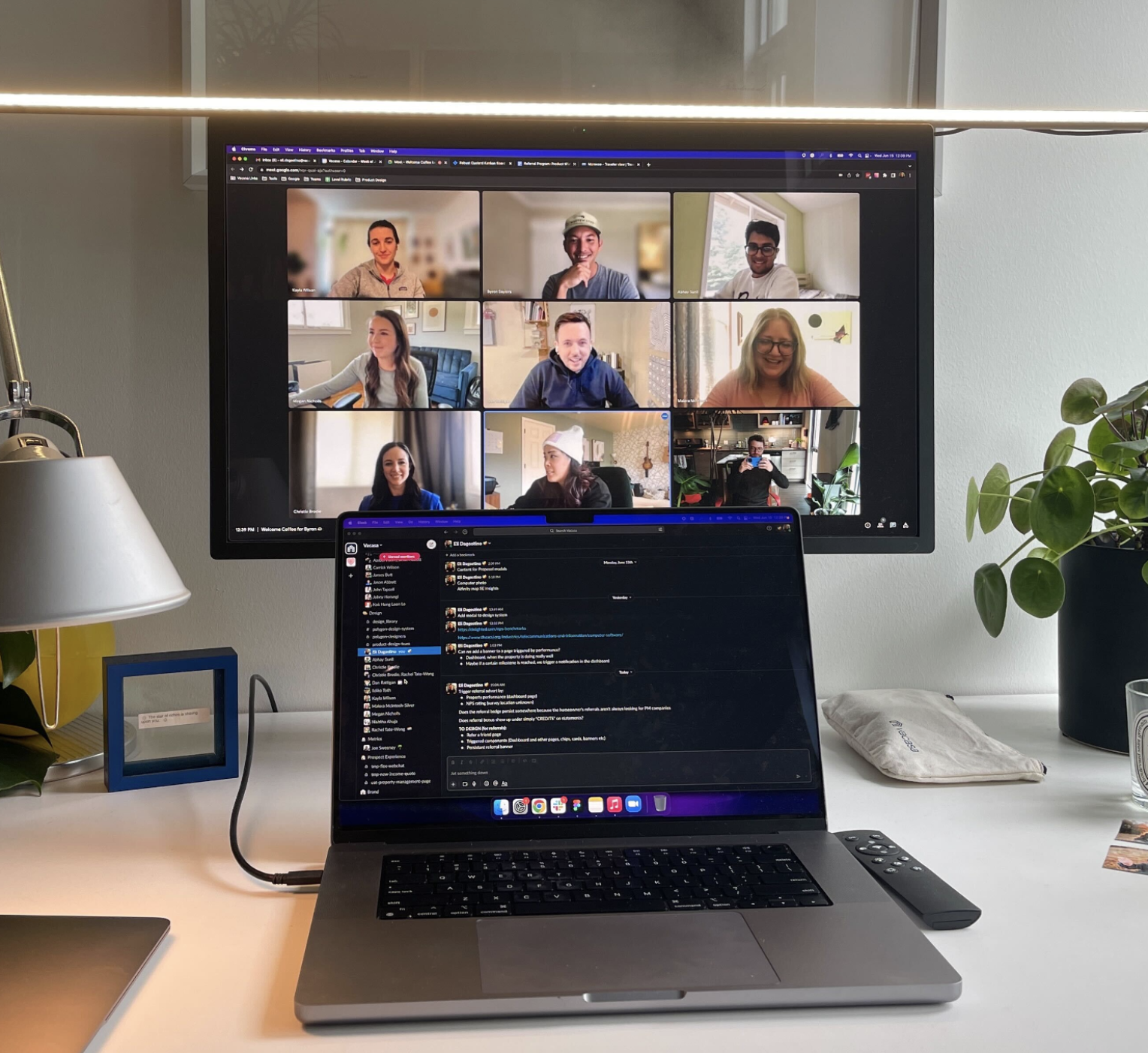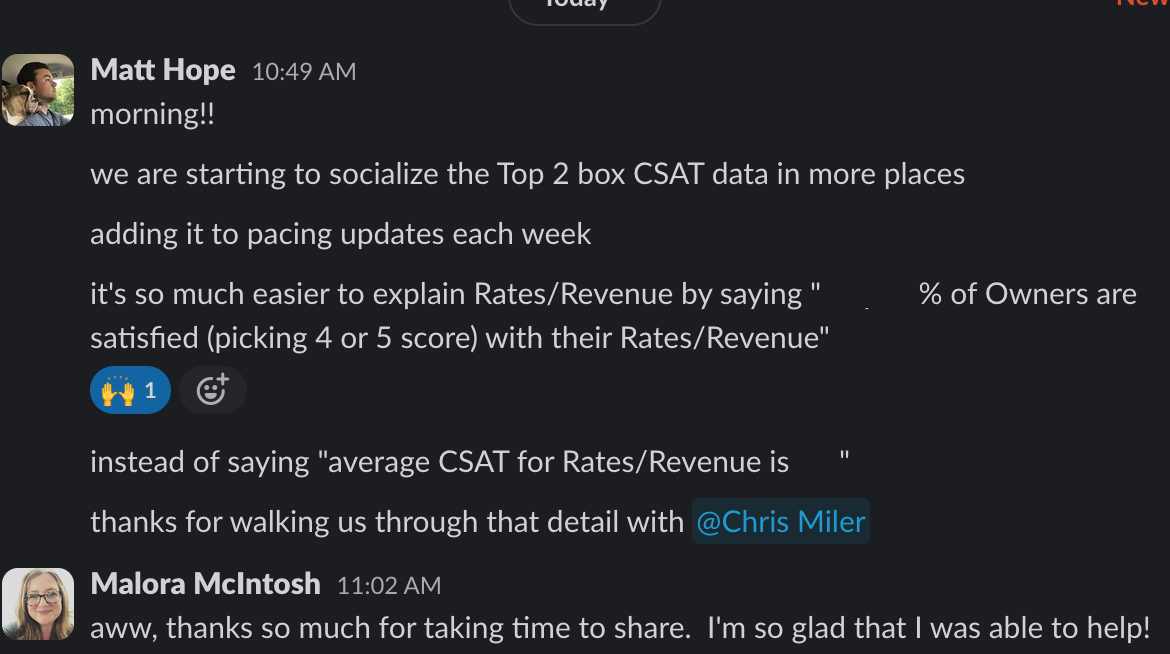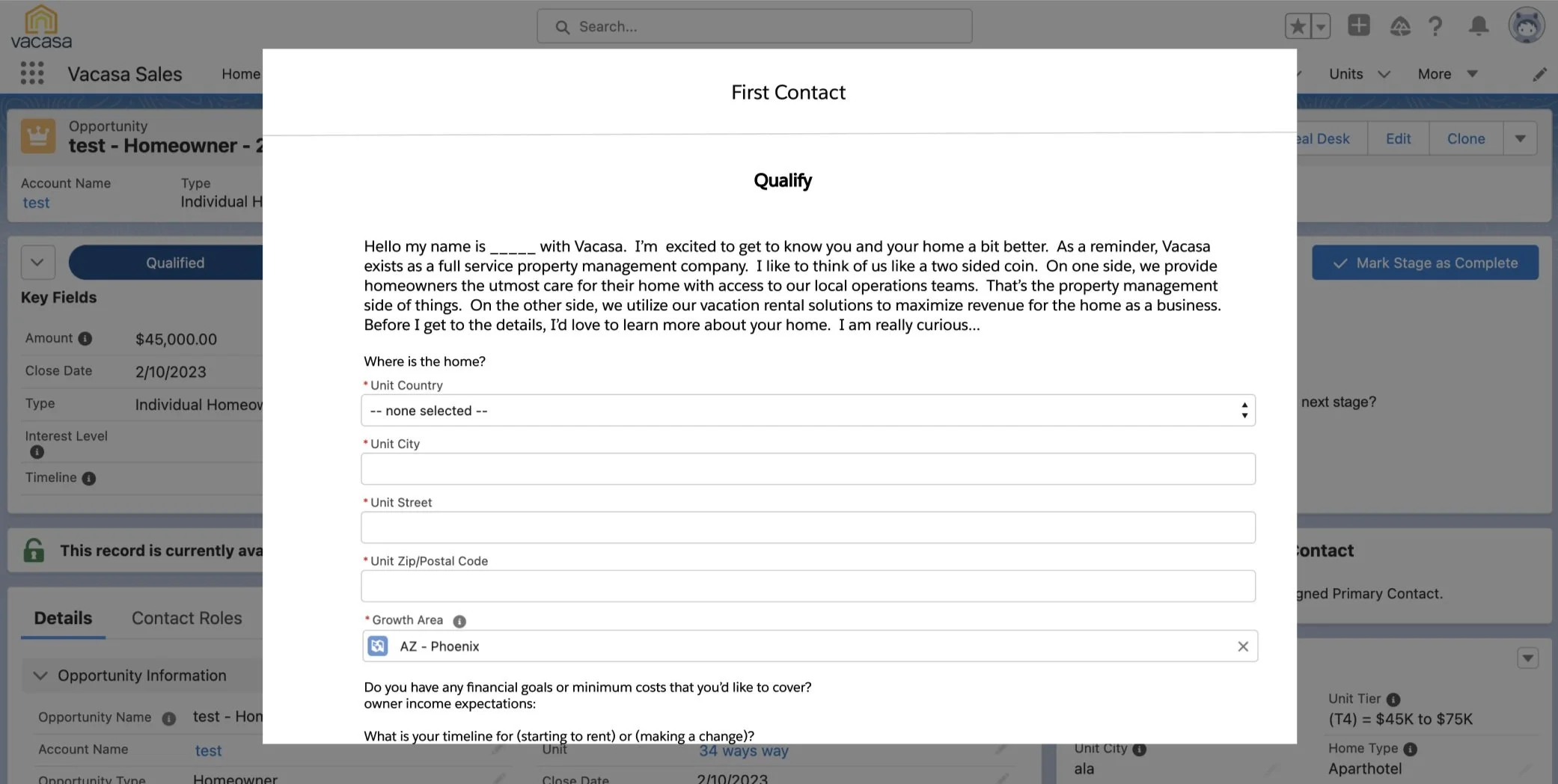Sales Funnel Optimization / Service Design
Year: 2022
Role: Lead Researcher / Individual Contributor
Situation:
Vacasa is a national tech-enabled vacation property management company.
The business grew at an incredible pace outgrowing their sales platform.
An upgrade was necessary, however, in the move to Salesforce, internal and consultant turnover in key areas led to a number of mistakes during setup and implementation.
Problem:
Vacasa’s new customer management system was confusing, cumbersome, and time consuming. It wasted a tremendous amount of the sales executives’ time and effort, and when the sales team tried to speed through administrative tasks, data quality became an issue as well.
Sales executives needed to clear their schedule and focus on their main task: closing deals. Vacasa needed foundational understanding of how their sales team currently worked, a vision of how it should work, and then a strategy that took sales process from current state to future state.
In-depth interviews
After meeting with stakeholders to better understand the problem and scope, I opted for a series of 1:1 in-depth interviews / immersion sessions with the sales executives (5 inside sales reps, 5 outside sales reps). I knew that these interviews would help me to understand the current sales process and the team’s pain points. I reviewed individual sales performance data and worked closely with the sales leadership to ensure participants represented a range of performance and personality types.
Daily Figjam Brain Dump
After each interview, I dropped new notes, around goals, context, pain points, etc. on stickies in a collaborative Figjam file.
Task and Journey Map
“It isn’t Salesforce per say - I have worked with Salesforce for 20 years - it’s the overbuilt process that we customized it for here at Vacasa - way too much info - too controlled and cumbersome. It should not be this difficult to take a home live as we have made it at Vacasa. ”
As I started becoming familiar with the sales process, I truly empathized with the sales executives. The current process was slow and confusing. I became obsessed with helping them and threw myself into documenting the entire current process because I knew that having all of those details would put me in a better position to craft solutions. I created the diagram shown here to visually represent the many steps that the sales reps took for each sale. I also included training documents and scripts in here as well so I had all of the information in one place. I was unfamiliar with the complex process so doing it this way helped me to figure out what I was missing and set me up for my next interview.
Task Affinity Mapping
The amount of tasks that I needed to organize was intimidating. I felt that it would be helpful to group the massive amount of tasks that the sales executives were completing. Somewhat of a spin on traditional affinity maps, I grouped tasks by the major outcomes that needed to occur prior to a contract being signed. This type of organization helped the stages of the sales journey naturally come together - almost on its own.
Sales Team Survey
Once I had an early draft formed of the sales journey and stages, I used the those insights to develop a survey that was sent out to all sales executives. This survey helped our team validate the journey stages, quantify pain points, and prioritize next steps.
Report / Shareout
Throughout any project, I am continually working on the story and deck. Weaving quant and qual data is not for the faint of heart but I enjoy the complexity and the challenge of making complex concepts easy to digest. For this project, I broke up the report into sections based on the new stages. Each section included survey data, quotes, and slide on what’s working (enablers), what needs work (barriers), along with relevant sales metrics.
Sample recommendations:
I proposed a new sales funnel with reduced fields; one that was centered around the owner experience and key desired outcomes.
I suggested prioritizing the correction of duplicate entries as this was creating a large amount of unnecessary complexity and accuracy issues which greatly increased admin time.
Collaboration
I couldn’t have asked for better sales team stakeholders on this project! Our close collaboration at every step of the way no doubt added to our success. They were always eager, supportive, and quick to get me anything I needed to stay on schedule. When it came time to implement the recommendations in the deck, they treated each one like a checklist, ensuring that every pain point was addressed.
As they worked their way through the checklist, I had moved on to new projects, but we kept regular check-ins so that I could provide follow up information and resources such as:
Detailed data field requirements
Strategic approach for to eliminate duplicates while minimizing risk
Salesforce screen designs (see below)
Outcome:
From the Sales Executive’s perspective, the main changes happened within Salesforce. Dozens, if not hundreds, of superfluous data entry fields were removed and the phases of the sales funnel went from twelve down to just six.
Once all of these improvements were implemented, Vacasa enjoyed ~25% increase in sales per sales rep, a 46% reduction in admin time, improved data quality, and more.
In the News: Vacasa CEO Prioritizes Improved Tech for Sales Team Over New Acquisitions

